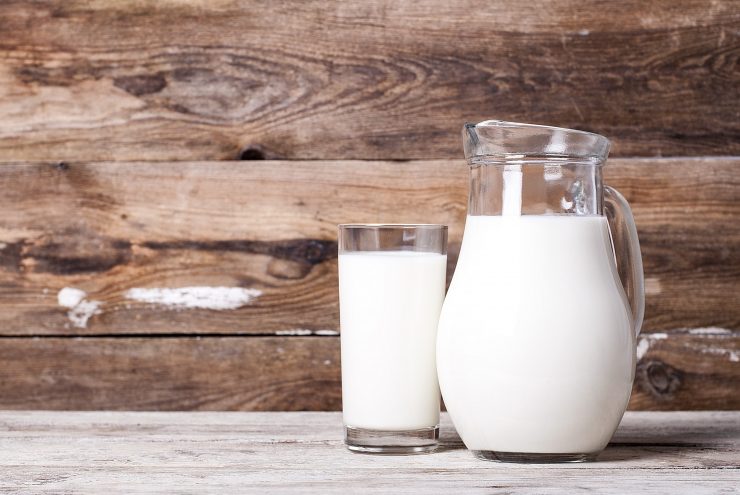Australian dairy farmers are among the words best, and are leaders in the fields of sustainability and innovation.
Australia’s dairy industry contributes $3 billion to Australia’s economy with the average size of a dairy farm herd increasing from 93 cows in 1985 to 261 cows in 2017.
Today there are approximately 1.5 million dairy cows in Australia and in the last year, Australian dairy cows produced approximately 9 billion litres of milk.
But how exactly is milk made?
How milk is made depends on a number of different technologies – all designed to make the process more efficient.
Cows are milked using vacuum cups which are attached to the cow’s teats. The milk is sent through stainless steel pipes to large refrigerated vats, then stored at 5°C or less. Within 48 hours, milk is taken in tankers to a milk factory where it’s pasteurised and homogenised.

Pasteurisation
This technique heats milk to 72°C for no less than 15 seconds, then cooled immediately to destroy any harmful bacteria and micro-organisms. This also extends the shelf life.
Homogenisation
Milk is put under pressure through fine nozzles, which evenly disperses fat globules. This stops the cream separating and rising to the top, allowing a more consistent texture and taste. Some manufacturers produce unhomogenised milk for people who prefer the cream to separate and rise to the top of the bottle.
Today’s farm technology, cattle management and factory methods allow for greater consistency of milk, and milk composition can be adjusted for year-round consistency. Milk composition is standardised so elements like fat content are made consistent no matter the season or breed of cow the milk comes from.

The composition of milk is governed by the Food Standards Australia New Zealand Food Standards Code. These standards are consistent with international standards – milk consumed in nearly all developed countries will have very similar standards.
The Code allows manufacturers to add or withdraw milk components to standardise the composition of milk sourced from dairy farms, as required, to produce nutritionally consistent and safe products. Under the Code, the standard for packaged full-fat milk requires that it contain at least 3.2% of fat and 3.0% of protein
Centrifugal separation
This removes some or all of the cream to make reduced-fat, low-fat or skim milk. Skim milk solids can be added back to improve the test and texture, and increase nutrients like protein and calcium.
Ultrafiltration
This moves milk across a membrane under moderate pressure, which holds back protein, fat globules, and a large amount of calcium complexes.
Water and lactose (the sugar in milk) pass through, leaving behind a very protein and calcium-rich product. The fat content can be adjusted to suit consumer preference.

Reverse osmosis
This is very similar to ultrafiltration, but the membrane holds back most of the milk solids and only lets water pass through. Lactose remains in the product. There is no impact on flavour.
Ultra osmosis
This is a combination of ultrafiltration and reverse osmosis, but it holds back milk solids and allows both water and salt to pass through.
Spray drying
This removes water from milk in order to make powdered milk products. Milk’s nutritional value remains the same.

Permeate
In order to standardise milk year-round, some manufacturers use a process called ultrafiltration where a membrane filter separates certain elements from milk (just like in the descriptions above). Milk is passed through a very fine filter, and the lactose (milk sugar), vitamins and minerals that filter through are referred to as “permeate”.
Permeate is a technical term which applies to all membrane filtration processes used across food production and other industries. For example, when producing apple juice the fruit is put through a similar filtration process where permeate is the clear juice we end up buying and consuming.
In milk processing, the word “permeate” does not refer to anything added which was not already part of milk.
That filter helps milk producers make milk with consistent properties, which helps it conform to the Food Standards Australia New Zealand Food Standards Code.
For more information about Australian dairy, and to explore a range of dairy inspired recipes visit Dairy Australia.







































Add comment